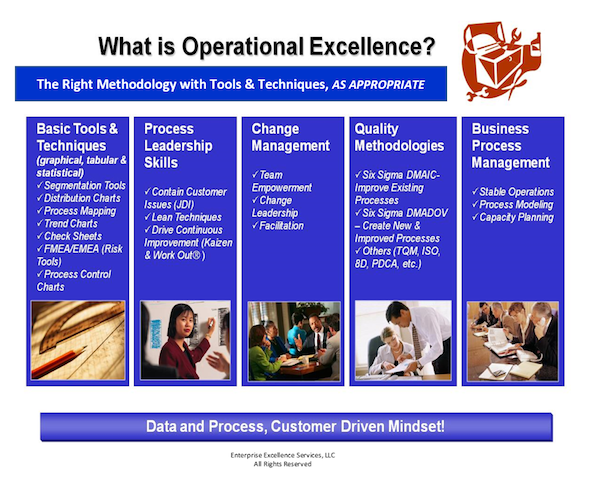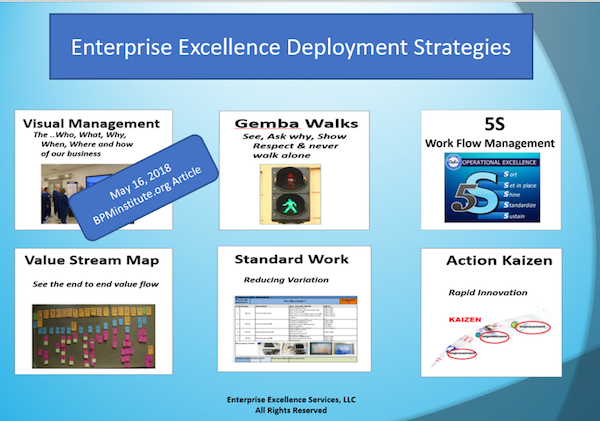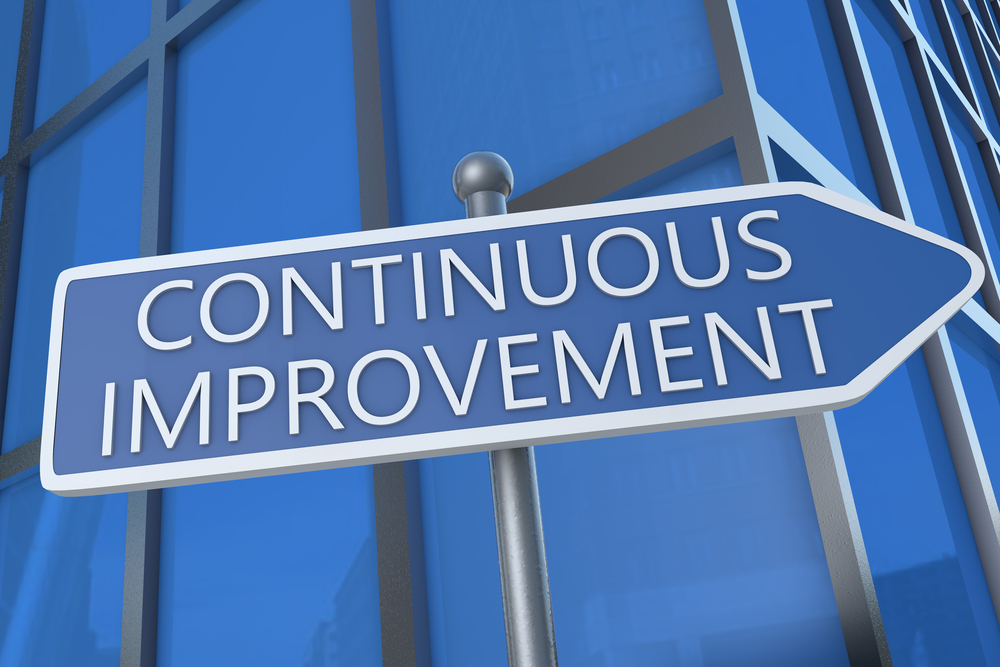 As Part of a Business Transformation and Enterprise Excellence strategy, how can the tools of Operational Excellence be integrated into Business Strategy?
As Part of a Business Transformation and Enterprise Excellence strategy, how can the tools of Operational Excellence be integrated into Business Strategy?
I thought I’d share a view of Operational Excellence (OpEx) that I’ve used over the years in engaging Leadership as well as during Training and Development classes.
Too often OpEx is viewed as a set of tools to apply … That couldn’t be further from the truth.
OpEx starts with two simple questions – “What’s the problem or opportunity for improvement?” and “How does it link to our Business Strategy?”.
Then the right METHODOLOGY with Tool & Techniques AS APPROPRIATE can be applied. A series of more sophisticated methodologies for driving future improvements can be leveraged:

 Tell me more about these Basic Tools & Techniques
Tell me more about these Basic Tools & Techniques
Basic Tools & Techniques 1 can be introduced and taught in a half hour or less for all to use. Coaches & OpEx Leaders can then provide more detailed and deeper graphical, tabular and statistical approaches behind these basics, as needed. In most cases, the basics provide the “quick hit” understanding that delivers fast improvements.
 And then Process Leadership drives the next levels of improvements – right?
And then Process Leadership drives the next levels of improvements – right?
Process Leadership Skills2start with Business Leadership and get ingrained into the business strategy through OpEx Leaders and Lean Leadership Coaches. Once the “Quick Hits” are delivered, a systematic approach through Process Improvement Methodologies kick-in. Customer issues can be addressed short term through a Containment Strategy; then Lean and the power of Kaizen and Work-Out®Team Empowerment actions are ramped up to deliver longer term improvements.
 And what about the Culture Changes required for improvement and sustainability?
And what about the Culture Changes required for improvement and sustainability?
Change Management3that encourages Team Empowerment and provides Change Leadership and Facilitation skills to move the culture to future state improvements and opportunities are deployed. This is critical to sustainability of the change and improvements.
 And now Quality Methodologies can be leveraged?
And now Quality Methodologies can be leveraged?
Quality Methodologies4can now be brought to bear on more complex problems and broader more challenging improvement opportunities requiring Change Management coaching & Leadership support. Much as we measure/monitor metrics for our process (KPIs – Key Performance Indices), we should measure/monitor Culture Change (KBIs – Key Behavior Indices)
 And at its most sophisticated level, we can now link our Business Strategies to Business Process Management?
And at its most sophisticated level, we can now link our Business Strategies to Business Process Management?
Business Process Management5represents the most complex level of change and improvement with methodologies of Stable Operations, Process Modeling and Supply Chain/Capacity Planning to meet the Business Strategies.
Look for future articles on Enterprise Excellence Business Process Management as well as deployment strategies as shown below:

References:
1. Basic Tools & Techniques… Gemba Academy has a whole range of on-line video training modules – http://www.gembaacademy.com/?utm_source=bing&utm_medium=cpc&utm_campaign=Brand&utm_term=gemba%20accademy&utm_content=*%20S%20-%20GA%20Brand%20Ad%20Group
Segmentation Tools
Visuals-graphics examples: https://www.bing.com/images/search?q=segmentation+tools&qpvt=segmentation+tools&FORM=IGRE
Data Mining techniques… https://en.wikipedia.org/wiki/Data_mining
Distribution graphics-charts-types: https://www.bing.com/images/search?q=distribution+charts&qpvt=distribution+charts&FORM=IGRE, Videos on creating Excel Distribution Charts https://www.bing.com/videos/search?q=Excel+Frequency+Distribution+Chart&FORM=HDRSC3
Segmentation Tools
Visuals-graphics examples: https://www.bing.com/images/search?q=Process+Mapping+Examples&FORM=RESTAB
A good introduction book – “The Basics of Process Mapping”, 2ndEdition, Author – Robert Damelio, ISBN-10:1563273764 ISBN-13:9781563273766 , Pub. Date: 06/01/2011 Publisher: Taylor & Francis
Trend Charts – Common Trend Analysis tools – Time series plots, Run charts, Regression plots, Bar charts, Control charts, etc.
Trend Chart Examples:
https://www.bing.com/images/search?q=trend+charts&qpvt=trend+charts&FORM=IGRE
Check Sheets
Check Sheet examples:
https://www.bing.com/images/search?q=check+sheet+examples&qpvt=check+sheet+examples&FORM=IGRE
FMEA/EMEA
“The Basics of FMEA”, 2ndEdition, by Raymond J. Mikulak, Robin McDermott, Michael Beauregard; ISBN-13:9781563273763 , Publisher: Taylor & Francis
“The FMEA Pocket Handbook” by Kenneth W. Dailey,ISBN-13:978-0974722122
FMEA Examples –https://www.bing.com/images/search?q=fmea+examples&qpvt=fmea+examples&FORM=IGRE
For EMEA – “Error Modes and Effects Analysis”, similar to FMEA but it focuses on Errors versus Failures.
Process Control Charts
Visuals-Graphics examples:
https://www.bing.com/images/search?q=process+control+charts&qpvt=process+control+charts&FORM=IARRSM
Control chart overview: https://www.isixsigma.com/tools-templates/control-charts/a-guide-to-control-charts/
2. Process Leadership Skills … there are numerous articles and books on Lean and Kaizen methodologies. Work-out®is a trademarked methodology from General Electric Company on the use of “high-performance teams composed of internal “knowledge experts” who are familiar to the challenge – as well as team members like customers, suppliers or other business partners, where appropriate – who analyze the critical business issue and report-out recommendations to management for improvement.”
3. Change Management… there are numerous articles and books available on Empowerment, Change Leadership, and Facilitation.
4. Quality Methodologies … All of these are well documented and readily available by on-line searches.
5. Business Process Management … These advanced methodologies will be addressed in future articles.

















